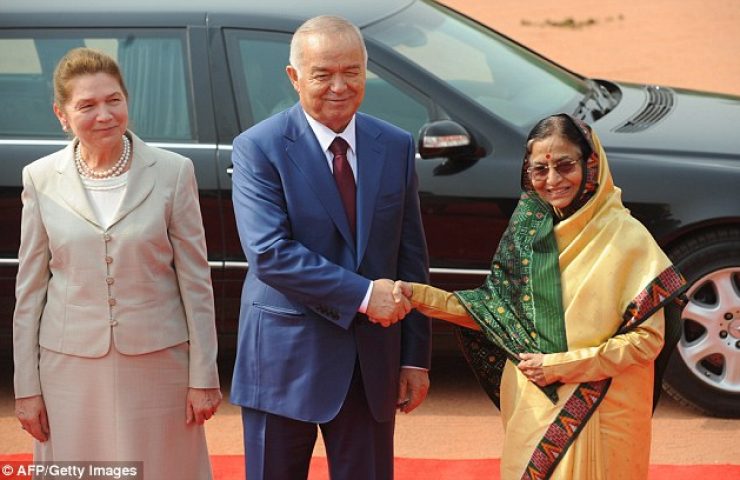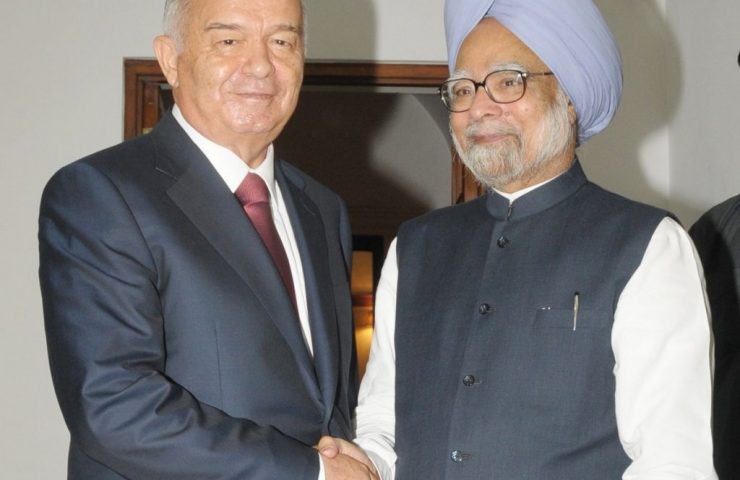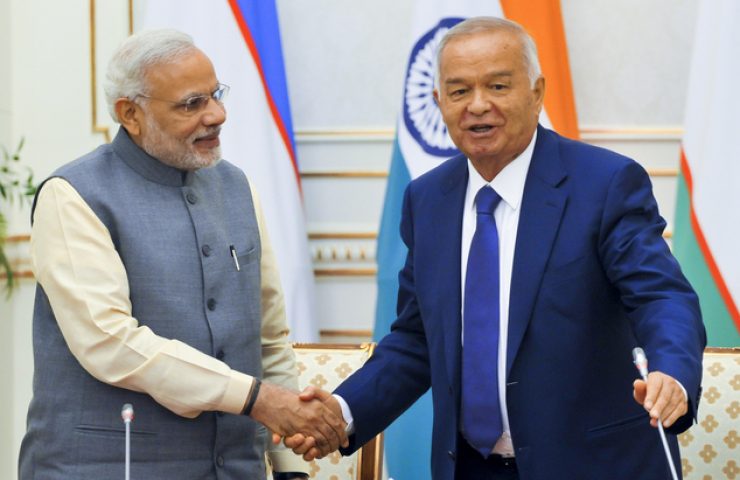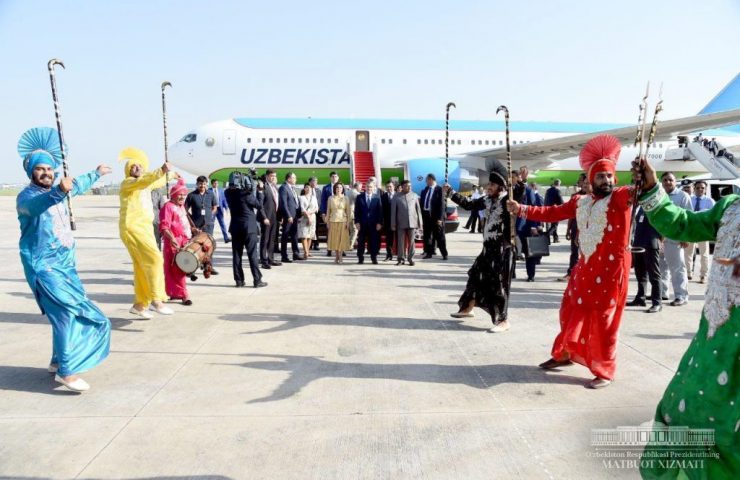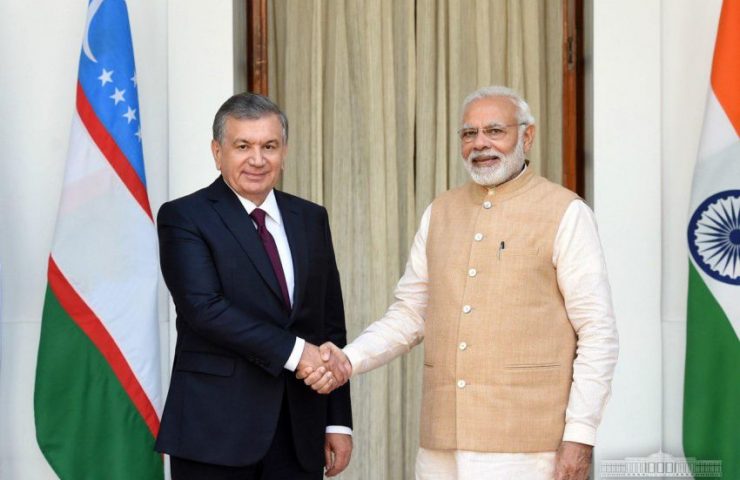India did not claim to be one of the leading external actors in Central Asia. The region belongs to its so-called “extended neighborhood”, but the main problem is the lack of direct ground access. Security issues and the geopolitical situation are key factors that are limiting the scope of cooperation.
Follow us on Facebook
India is an emerging superpower and is in process of demonstrating its new position as an Asian center of power. India is also striving to establish itself as an important regional actor in Central Asia. India’s activities in the SCO show its own vision of regional processes and the country’s position in them. In this regard, it is of interest to analyze the politics of India in the region, the existing potential, and factors hindering its implementation.
Historical foundation
The ties of India and Central Asia have deep historical roots. It is believed that Buddhism came from India to China through Central Asia. Babur, the founder of the Mughal dynasty, was born on the territory of modern Uzbekistan. The Great Silk Road linked India and Central Asia for hundreds of years. Trade and cultural ties affected both Central and South Asia. Even now, there are many common words in Indian and Central Asian languages.
In the 19th century, after the so-called “Great Game”, relations between the regions were broken, where Russia conquered Turkestan, India remained under Great Britain, and a buffer state (Afghanistan) formed between them.
After the formation of independent states in South Asia, the Soviet Union developed close ties with India. In Central Asia, Tashkent has become a center for multiformat cooperation. For example, negotiations following the results of the Indo-Pakistani war of 1965 between Lal Bahadur Shastri and Ayyub Khan and the signing of a joint declaration took place in 1966 in the capital of the Uzbek SSR. The International Film Festival of Asia and Africa was held in Tashkent; Uzbekistan and India co-produced films. In addition, Tashkent has four streets named after Mahatma Gandhi, Jawaharlal Nehru, Rabindranath Tagore and Lal Bahadur Shastri.
In general, at the time of the formation of independent states in Central Asia, India had a strong and stable positive image, and a good basis for cooperation.
Modest amount of cooperation
India did not claim to be one of the external actors in Central Asia. The region belongs to its so-called “extended neighborhood”, but the main problem is the lack of direct ground access. Security issues and the geopolitical situation are key factors that are limiting the scope of cooperation.
Meanwhile, political relations are developing quite stably. Diplomatic relations between India and the countries of Central Asia were established in 1992. At a good level, contacts are maintained at the highest level. For example, the first President of the Republic of Uzbekistan, Islam Karimov, visited India in 1991, 1994, 2000, 2005 and 2011, and Shavkat Mirziyoyev in 2018. Indian Prime Minister Narasimha Rao visited Uzbekistan in 1993, and Prime Minister Manmohan Singh in 2006.
Trade and economic relations are maintained at a stable, albeit on quite modest level. The leader among the countries of Central Asia is Kazakhstan, whose trade volume with India exceeds $ 1 billion.[1] The remaining states of the region are significantly behind, where the figures differ from tens of millions of dollars in the case of Kyrgyzstan and Tajikistan to almost $ 300 million in the case of Uzbekistan. These volumes are very far from the existing unrealized potential, as well as the turnover with China or Russia, or even from intra-regional trade between Uzbekistan and Kazakhstan.
In order to strengthen its position in the region and clearly indicate its intentions, Delhi put forward the strategies of “Connect Central Asia”[2] and “Extended Neighborhood”.[3] Both strategies are based on active political, economic and human interaction with the countries of Central Asia, but still need stable land communications. Meanwhile, the willingness to provide grants and loans is an example of India’s intentions and its growing potential. In particular, a preferential loan worth $ 1 billion for infrastructure development was offered to Uzbekistan.[4]
For their part, the Central Asian countries see India as a fast-growing economy, a potential investor and an increasingly influential actor in the region, as evidenced by the new format of the ministerial dialogue “India – Central Asia”, the first meeting of which was held in Samarkand in January 2019.
Drill a window to the Central Asia
Geopolitics largely determines the position of India in the region. Permanent confrontation with Pakistan has an extremely negative impact on Delhi’s ties with the Central Asian republics. Pakistan denies India to transit through its territory, which limits the possibilities of cooperation with Afghanistan and Central Asia.

Afghan conflict also complements the situation. In recent years, Afghanistan (IRA) has taken center stage in the Indo-Pakistani confrontation. Considering the IRA as a priority, India seeks to prevent the strengthening of a strong and anti-Indian (pro-Pakistan) government in Kabul. For its part, Pakistan is building its regional policy out of the need to confront the threat of a “strategic environment” (“strategic ticks”) from India and Afghanistan. The attention paid by India to Afghan affairs is incomparably greater than the issues of cooperation with the countries of Central Asia.
Under the current conditions, in order to provide access to Afghanistan and Central Asia, India is intensively developing a transport corridor, the key link of which is Iran.
The Agreement on the Establishment of the International North–South Transport Corridor (INSTC) provided for the carriage of goods from Indian ports to the Iranian port of Bender Abbas, then from the Caspian port of Bender-i-Azali to Astrakhan and then using Russian railways to the city of St. Petersburg. As the idea of a transport corridor was realized, Mumbai was chosen as the main port of India, and Chabahar as Iran.
The lifting of international sanctions from Iran in 2016 dramatically accelerated the implementation of the project. Testing of the international transport corridor from Mumbai to St. Petersburg allowed reducing the time of cargo delivery from 45 days to 25 days.[5]
Interest in the North-South transport route was expressed by the countries of Central Asia, other CIS countries, as well as South Asia and the Middle East. Of note is the intersection with the Central Asia-Middle East transport corridor and the tripartite agreement on transit and trade between India, Iran and Afghanistan, signed in May 2016.
India considers the direction from Mumbai to St. Petersburg as the most important component of the route connecting it with Southeast Asia and the Asia-Pacific region. The North-South Indian project directly contradicts the East-West concept of China, but Delhi, in the context of the Beijing Silk Road Economic Belt project and its possibly key component of the Sino-Pakistan economic corridor, as well as the Sea Silk Road of the 21st Century, pursues an active policy of developing alternative transport and communication routes.
Promoting an alternative idea to the Belt and Road project, Delhi is actively developing its ground-based rail and road network to ASAN countries. In this regard, it should be noted that the network of land roads from Southeast Asia to India could get a natural extension through the territory of Pakistan and Afghanistan and further to Central Asia. Similar ideas are in rehabilitation projects for pre-existing Afghanistan-Pakistan-India-Bangladesh-Myanmar (APIBM) and Pakistan-India-Nepal transport corridors.
At the same time, reliance on Iran as the main partner in the implementation of the North-South project seems extremely risky, especially taking into account recent developments in Iranian-American relations, Tehran’s “hybrid war” tactics in the Middle East and the threat of its domestic political destabilization. The new sanctions of Washington and, possibly, some of its allies can worsen not only the situation in Iran and Iran-India relations, but also cause even more cautious attitude on the part of Central Asian countries to the consequences of cooperation with Iran.
Cooperation withing the framework of CSO
The key instrument of multilateral cooperation in Central Asia for India is the SCO. India received observer status in 2005. In 2015, it was decided to start the process of joining the SCO of India and Pakistan. In 2016, during the SCO summit in Tashkent, both states signed commitment memorandum in order to obtain the status of a SCO member state. In 2017, India and Pakistan received the status of full members of the organization.
It seems that with the accession to the SCO, India gained more opportunities to be heard. Delhi’s voice has become louder, interests and positions are clearer, while India usually expresses a special opinion, refusing to support positions that do not meet its interests, but at the same time it is not able to advance its alternative vision.
Participation in the work of “regional antagonists” organization, complicates the development of consensus and procedural work, but it transforms the SCO from a predominantly Central Asian to a Pan-Asian structure, increasing its global significance.
At the same time, India and Pakistan already have negative experience in SAARC, whose activities are virtually paralyzed.[6] It can also be noted that the possibilities of the SCO in the event of a new round of Indo-Pakistani confrontation seem unclear, as well as the potential of a mediator as a neutral platform.[7] Moreover, the contradictions between the two South Asian powers are able to put Moscow and Beijing in front of the choice of one of the parties to the conflict.
Finally, the contradictions between India and China also affect the SCO. In particular, following the results of the Qingdao summit in 2018, all countries, with the exception of India, supported the PRC’s “Belt and Road” initiative.[8] Refusing to support the Chinese project, Delhi informs not only Russia and China, but also the international community that it is not going to compromise on its fundamental interests.[9]
At the same time, if Beijing and Delhi in practice see their projects as a “zero-sum game,” this will only exacerbate uncertainty and tension. In this case, the Central Asian states will face a choice, and, given the role of the PRC in regional processes, most likely, Beijing’s projects will be the preferred option.
Energy projects
South and Central Asia are complementary players in the energy market. The energy resources of Central Asia are in high demand in the markets of India and Pakistan, however, to date, cooperation has been realized only in the supply of uranium from Kazakhstan and Uzbekistan to India.
Two long-discussed key energy projects are still not implemented due to geopolitical factors. However, they can potentially have a significant impact on the level of cooperation.
The CASA-1000 project provides for the possibility of exporting electricity to both Pakistan and Afghanistan, and in the long term to India. The main participants from Central Asia are Tajikistan and Kyrgyzstan, Uzbekistan expresses interest in participating as well.
The main factors holding back the implementation of energy projects still remain. These include project financing issues in Kyrgyzstan and Tajikistan and security issues in Afghanistan.
According to the World Bank, risks also include: energy supply systems; market risks; risks from partners (especially in payments); timely completion of construction; operational risks, such as technical malfunctions in the line; price and tariff risks; political risks; force majeure situations.[10]
The TAPI Pipeline is the second largest energy project to connect Central and South Asia. An intergovernmental agreement between Turkmenistan, Afghanistan, Pakistan and India was signed in 2010. Turkmenistan expects to export 33 billion cubic meters. of gas per year, out of which 14 billion cubic meters of gas (42%) will receive Pakistan and India, 5.11 billion cubic meters of gas (16%) – Afghanistan, which will also be able to receive payment for transit through its territory in the amount of about 400 million US dollars annually. The estimated cost of the project is $ 7.5 billion.[11]
It is believed that TAPI has the potential to unite neighbors, including Afghanistan, Pakistan and India, and become a “peace pipeline” and a good example of the development of other joint projects. Nevertheless, the obstacles to the implementation of the project still cast doubt on its implementation, or at least in the planned terms.
Conclusion
In general, India has a fairly strong position in Central Asia. It maintains stable relations with all republics of the region, while occupying its niche in the political, economic and cultural-humanitarian spheres. In recent years, intensification of cooperation has been observed, due to the growing capabilities of India and its participation in the work of SCO. Delhi’s ambitions are reinforced by persistent attempts to overcome existing geopolitical barriers, first of all, to establish reliable land communications, the absence of which is the main constraint in the implementation of interregional projects, primarily in the field of trade, energy and transport communications.
However, to date, it seems that the growing influence of India in the world due to geopolitical reasons has not yet been symmetrically reflected in the Central Asian region. Delhi traditionally compares its capabilities with Beijing, however, in Central Asia, India needs to come to terms with fierce regional competition with supporting actors such as Turkey, Iran, Pakistan, and in this environment, the country must defend and promote its national interests. Despite its ambitions, participation in various formats of multilateral cooperation and demonstrative gestures, Delhi is not able to change the balance of power in the region, in which Beijing and Moscow will continue to play the main role. India’s appeal is obvious but its bet on growing economic opportunities and the complementarity of economies alone is not a guarantee of realizing the existing potential for cooperation. Breakthroughs require changes in geopolitical factors, infrastructure development and security guarantees.
This material has been prepared as part of the Giving Voice, Driving Change – from the Borderland to the Steppes Project project. The opinions expressed in the article do not reflect the position of the editorial board or donor.
[1] Sushma Swaraj. Kazakhstan and India: new horizons for cooperation. – Ministry of Foreign Affairs of Kazakhstan, 12/21/2018. – http://www.mfa.gov.kz/ru/content-view/susma-svaradz-kazakstan-men-ndistan-yntymaktastykty-zaa-kkziekteri
[2] See: Keynote address by MOS Shri E. Ahamed at First India-Central Asia Dialogue. – Ministry of External Affairs, Government of India, June 12, 2012. – https://www.mea.gov.in/Speeches-Statements.htm?dtl/19791/
[3] See: Anil Wadhwa, Secretary of the Ministry of External Affairs, Government of India. Keynote address at 6th IISS-MEA Dialogue on ‘India’s Extended Neighbourhood: Prospects and Challenges’. – Institute for Defence Studies and Ana7lysis (India), March 04, 2014. – https://idsa.in/keyspeeches/6thIISSMEADialogue_secretaryeast
[4] India offered Uzbekistan a soft loan of $ 1 billion for the implementation of infrastructure projects. – https://www.podrobno.uz/cat/economic/indiya-predlozhila-uzbekistanu-lgotnyy-kredit-na-1-mlrd-dlya-realizatsii-infrastrukturnykh-proektov-/
[5] See: Brig NK Bhatia. INSTC and CPEC: Conflicts and Politics of Corridors. Centre for Land Warfare Studies (CLAWS, India), October 01, 2016 – http://www.claws.in/1647/instc-and-cpec-conflicts-and-politics-of-corridors-brig-nk-bhatia.html
[6] See: William Piekos and Elizabeth C. Economy. The Risks and Rewards of SCO Expansion. Council on Foreign Relations (USA). July 7, 2015 – https://www.cfr.org/expert-brief/risks-and-rewards-sco-expansion
[7] See: Salvatore Babones. Why Is Democratic India Joining Russia And China’s ‘Anti-Western’ Club, The SCO? – Forbes, November 29, 2017 – https://www.forbes.com/sites/salvatorebabones/2017/11/29/why-is-democratic-india-joining-russia-and-chinas-anti-western-club-the-sco/#2ea7ec584cac
[8] See: M. Konarovsky. Bonus for the G8 in Qingdao: to some results of the SCO summit. Russian Council on Foreign Affairs. 06/13/2018 – http://russiancouncil.ru/analytics-and-comments/analytics/bonus-dlya-bolshoy-vosmerki-v-tsindao-k-nekotorym-itogam-sammita-shos/?sphrase_id=20831422
[9] See: Gaurav Kumar. India at SCO: Challenges Supersede Opportunities. The United Service Institution of India. July 20, 2018 – http://usiofindia.org/Article/Print/?pub=Strategic%20Perspective&pubno=57&ano=3043
[10] See: Project Information Document: Concept Stage. 2012 – http://casa-1000.org/CASA_PID_updated%20[REVISED%2019June12.06.2012%20-%20Final%20_clean_%20rus.pdf
[11] See: Turkmenistan-Afghanistan-Pakistan-India (TAPI) Gas Pipeline Project. Hydrocarbons Technology. 30.11.2018 – https://www.hydrocarbons-technology.com/projects/turkmenistan-afghanistan-pakistan-india-tapi-gas-pipeline-project/


